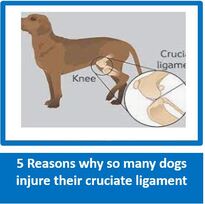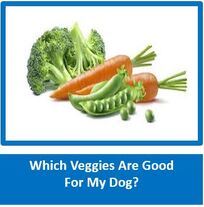
Please visit and LIKE and FOLLOW our Facebook Page and share with family, friends and on your own Facebook page, and ask them to share further – it is only by working together and sharing knowledge and education that we can improve the lives of dogs and assist owners. We do not inundate you with posts – an average of 5 per week, and the odd Did You Know and General Post. Thank You!

The issue of how to classify the dog and how to best feed dogs continues to be a highly controversial topic among dog people. If you doubt this, just try posting this statement in a dog feeding chat group:
“Dogs are omnivores and can thrive on a wide range of diet types.” Good luck surviving the night.
I discuss the current science regarding the dog’s classification in “Dog Food Logic” and in the Science Dog essay “Dogs are Carnivores, Right?“. (Spoiler alert: Dogs are omnivores). Regardless of what the science tells us, there is continued belief in statements such as these:
“Dogs are obligate carnivores” [sorry, not];
“Dogs require meat in their diet” [no again]; and
“Dogs naturally crave the taste of meat” [okay……this one may have some legs].
Anyone who lives with and trains dogs is aware that dogs are almost universally attracted to meaty foods and treats. Trainers use these preferences to select different levels of “treat value” for dogs and almost invariably, the treats that are of highest value to a dog are those that have a meaty texture, smell and (we assume) taste. It is also true that most dogs are highly attracted to and readily consume high protein diets that include cooked, extruded or raw meat of various types. So, are these preferences a reflection of the dog’s predatory past (wolf ancestors)? If so, are such preferences something that dogs are born with or is there a strong influence of learning and environment on our dogs’ apparent “taste for meat“?
A recent set of experiments conducted by researchers who study free-ranging dogs in India asked these questions and provide us with some new information.
“Dogs are omnivores and can thrive on a wide range of diet types.” Good luck surviving the night.
I discuss the current science regarding the dog’s classification in “Dog Food Logic” and in the Science Dog essay “Dogs are Carnivores, Right?“. (Spoiler alert: Dogs are omnivores). Regardless of what the science tells us, there is continued belief in statements such as these:
“Dogs are obligate carnivores” [sorry, not];
“Dogs require meat in their diet” [no again]; and
“Dogs naturally crave the taste of meat” [okay……this one may have some legs].
Anyone who lives with and trains dogs is aware that dogs are almost universally attracted to meaty foods and treats. Trainers use these preferences to select different levels of “treat value” for dogs and almost invariably, the treats that are of highest value to a dog are those that have a meaty texture, smell and (we assume) taste. It is also true that most dogs are highly attracted to and readily consume high protein diets that include cooked, extruded or raw meat of various types. So, are these preferences a reflection of the dog’s predatory past (wolf ancestors)? If so, are such preferences something that dogs are born with or is there a strong influence of learning and environment on our dogs’ apparent “taste for meat“?
A recent set of experiments conducted by researchers who study free-ranging dogs in India asked these questions and provide us with some new information.
 Free-Ranging dogs scavenging garbage
Free-Ranging dogs scavenging garbage
The Diet of Free-Ranging Dogs:
Free-ranging dogs exist in numerous countries around the world, including Mexico, Italy, Nepal, Japan, many African countries, and India. They survive almost entirely by scavenging and occasionally augment their diet by begging and hunting small animals. In India, the history of free-ranging dogs is well-documented, extending back to the 9th century BC and representing more than 1000 generations of dogs.
Indian free-ranging dogs consume a diet that is rich in carbohydrate (biscuits, bread, rice) and relatively low in protein. The protein that is consumed is in the form of scraps of meat or fish adhering to bones, decomposing meat, and the remains of carcasses. Domestic dogs are better adapted to scavenging and a diet that is higher in carbohydrate foods than were their wolf-like ancestors because of changes in foraging behavior (increased scavenging/decreased pack hunting) and enhanced ability to digest starch (increased copies of the gene AMY2B, the gene that codes for pancreatic amylase). However, just because dogs can consume and digest diets that contain a high proportion of carbohydrate (starches), it does not necessarily follow that they prefer such diets or that it is the healthiest or best way to feed them.
Although there are multiple questions here, the two that the Indian researchers attempted to answer were: “Do dogs have a strong preference for meat in their diet?” and if so, is such a preference innate (i.e. puppies are born with this preference) or is it reliant upon or strongly influenced by learning?
Do free-ranging dogs show a preference for meat?
In the first study, the researchers offered 30 free-ranging dogs a variety of food choices in four separate experiments. In the first, dogs chose between bread, bread soaked in water, and bread soaked in chicken broth. They selected between bread, bread soaked in gravy, and cooked chicken in the second experiment. The third offered the dogs choices between dry dog kibble or bread soaked in varying concentrations of chicken broth. The final experiment offered the dogs varying combinations of bread and dog food kibble, soaked with different concentrations of chicken broth. The purpose of this final set of choices was to separate the factors of meat smell from nutrient (protein) content, because dogs have been previously shown to be capable of self-selecting a diet according to its macronutrient (protein/fat/carbohydrate) content (3,4 [more about these studies soon]).
Free-ranging dogs exist in numerous countries around the world, including Mexico, Italy, Nepal, Japan, many African countries, and India. They survive almost entirely by scavenging and occasionally augment their diet by begging and hunting small animals. In India, the history of free-ranging dogs is well-documented, extending back to the 9th century BC and representing more than 1000 generations of dogs.
Indian free-ranging dogs consume a diet that is rich in carbohydrate (biscuits, bread, rice) and relatively low in protein. The protein that is consumed is in the form of scraps of meat or fish adhering to bones, decomposing meat, and the remains of carcasses. Domestic dogs are better adapted to scavenging and a diet that is higher in carbohydrate foods than were their wolf-like ancestors because of changes in foraging behavior (increased scavenging/decreased pack hunting) and enhanced ability to digest starch (increased copies of the gene AMY2B, the gene that codes for pancreatic amylase). However, just because dogs can consume and digest diets that contain a high proportion of carbohydrate (starches), it does not necessarily follow that they prefer such diets or that it is the healthiest or best way to feed them.
Although there are multiple questions here, the two that the Indian researchers attempted to answer were: “Do dogs have a strong preference for meat in their diet?” and if so, is such a preference innate (i.e. puppies are born with this preference) or is it reliant upon or strongly influenced by learning?
Do free-ranging dogs show a preference for meat?
In the first study, the researchers offered 30 free-ranging dogs a variety of food choices in four separate experiments. In the first, dogs chose between bread, bread soaked in water, and bread soaked in chicken broth. They selected between bread, bread soaked in gravy, and cooked chicken in the second experiment. The third offered the dogs choices between dry dog kibble or bread soaked in varying concentrations of chicken broth. The final experiment offered the dogs varying combinations of bread and dog food kibble, soaked with different concentrations of chicken broth. The purpose of this final set of choices was to separate the factors of meat smell from nutrient (protein) content, because dogs have been previously shown to be capable of self-selecting a diet according to its macronutrient (protein/fat/carbohydrate) content (3,4 [more about these studies soon]).
Results: The following preferences were found in the adult, free-ranging dogs:
- Meat (smell) beats carbs: The dogs consistently chose bread soaked in chicken broth over dry bread or bread soaked in water, even though chicken broth contains only a small amount of actual protein. They also selected chicken meat first over chicken-soaked bread or dry bread, when allowed to choose visually.
- Smell beats all: When the dogs were offered kibble (high protein food) or bread (low protein food) soaked with varying concentrations of chicken broth, they consumed all of the foods equally, showing no absolute preference in terms of the quantity that was consumed.
However, the order of selection depended completely upon how much chicken broth was soaking the food, regardless of its nutrient content. In other words, the dogs chose according to smell, not in accordance with the actual amount of meat protein present in the food.
“Rule of Thumb”:
The cumulative results of the four experiments support the existence of the following rule of thumb for food choice: “Choose the food that smells the most intensely of meat first.” This means that the dogs preferred foods that smelled of meat (but that were not necessarily good sources of protein) over those that smelled less meaty, even when the less meaty smelling foods actually contained more meat ingredients and a higher protein content. This of course, makes sense, since in nature, a stronger meat smell is highly correlated with high meat and protein content and invariably predicts higher meat quantity. This relationship only becomes skewed when clever experimenters enter the picture and mess with it. The authors conclude that while domestic dogs have adapted a scavenging lifestyle, they appear to have done so without giving up a strong preference for meat. They suggest that while the domestic dog has indeed evolved to more efficiently digest carbohydrate and exist on a carbohydrate-rich scavenged diet, they continue to be strongly attracted to the smell of meat and preferentially select meat-smelling foods. (Not surprising at all to most dog owners; but again, good to have science backing up experiences and beliefs).
But wait, they are not finished. The same researchers then asked……”So, are domestic dogs born with this preference for meat or is it a learned trait?” Using a clever design, they found out:
The Study:
The researchers conducted the same series of the experiments described above with the puppies of free-ranging dogs. The puppies were 8 to 10 weeks of age at the time of testing.
Results:
Here is what they found:
Take Away for Dog Folks: T
The first study’s results with adult, free-ranging dogs tell us that the dogs in this set of experiments were selecting foods based primarily on smell rather than an ability to discern actual meat content. The adult dogs were operating under the (pretty efficient) rule of “If it smells like meat, eat it” (We all know and love dogs who do this…..). This strategy is probably strongly selected for in an environment in which resources are limited, there are few energy and protein-dense foods available, and competition between dogs is high. This is not really a surprising result – except for the fact that the authors found that the scent of meat was more important than the actual meat (or protein) content of the food. Newly weaned puppies, on the other hand, lack this choice bias and appear to learn to choose “meaty” foods after weaning, either from the food choices of their mother, operantly, or most likely, a combination of the two.
So, what does this tell us about feeding our own dogs? Well, perhaps most importantly for all of you who enjoy a good internet scuffle, these results suggest that while dogs are predisposed to enjoy the taste of meat ingredients and clearly prefer these foods, puppies do not appear to be born with an attraction to the smell of meat per se and these preferences are influenced by learning early in life. On a practical level, these data, along with those of earlier studies of taste preferences in dogs and other species, tell us that the foods that are offered to a puppy at a young age should be expected to strongly influence the pup’s food and taste preferences as an adult dog.
“Rule of Thumb”:
The cumulative results of the four experiments support the existence of the following rule of thumb for food choice: “Choose the food that smells the most intensely of meat first.” This means that the dogs preferred foods that smelled of meat (but that were not necessarily good sources of protein) over those that smelled less meaty, even when the less meaty smelling foods actually contained more meat ingredients and a higher protein content. This of course, makes sense, since in nature, a stronger meat smell is highly correlated with high meat and protein content and invariably predicts higher meat quantity. This relationship only becomes skewed when clever experimenters enter the picture and mess with it. The authors conclude that while domestic dogs have adapted a scavenging lifestyle, they appear to have done so without giving up a strong preference for meat. They suggest that while the domestic dog has indeed evolved to more efficiently digest carbohydrate and exist on a carbohydrate-rich scavenged diet, they continue to be strongly attracted to the smell of meat and preferentially select meat-smelling foods. (Not surprising at all to most dog owners; but again, good to have science backing up experiences and beliefs).
But wait, they are not finished. The same researchers then asked……”So, are domestic dogs born with this preference for meat or is it a learned trait?” Using a clever design, they found out:
The Study:
The researchers conducted the same series of the experiments described above with the puppies of free-ranging dogs. The puppies were 8 to 10 weeks of age at the time of testing.
Results:
Here is what they found:
- Puppies did not discriminate: Unlike the adult dogs, puppies near weaning age showed no clear preference for foods that smelled strongly of meat and chose each food selection equally, regardless of how intensely it smelled of meat.
- Sniff and snatch strategy: While the adult dogs tended to first inspect (smell) all available food choices before choosing and consuming one, puppies did not show this behavior. Rather, they would smell a food, eat it and then move to the next food, showing little to no preference. The vast majority (89 %) of choices made by puppies followed this behavior pattern.
Take Away for Dog Folks: T
The first study’s results with adult, free-ranging dogs tell us that the dogs in this set of experiments were selecting foods based primarily on smell rather than an ability to discern actual meat content. The adult dogs were operating under the (pretty efficient) rule of “If it smells like meat, eat it” (We all know and love dogs who do this…..). This strategy is probably strongly selected for in an environment in which resources are limited, there are few energy and protein-dense foods available, and competition between dogs is high. This is not really a surprising result – except for the fact that the authors found that the scent of meat was more important than the actual meat (or protein) content of the food. Newly weaned puppies, on the other hand, lack this choice bias and appear to learn to choose “meaty” foods after weaning, either from the food choices of their mother, operantly, or most likely, a combination of the two.
So, what does this tell us about feeding our own dogs? Well, perhaps most importantly for all of you who enjoy a good internet scuffle, these results suggest that while dogs are predisposed to enjoy the taste of meat ingredients and clearly prefer these foods, puppies do not appear to be born with an attraction to the smell of meat per se and these preferences are influenced by learning early in life. On a practical level, these data, along with those of earlier studies of taste preferences in dogs and other species, tell us that the foods that are offered to a puppy at a young age should be expected to strongly influence the pup’s food and taste preferences as an adult dog.
- Bhadra A, Bhattacharjee D, Paul M and Ghadra A. The meat of the matter: A thumb rule for scavenging dogs. Ethology, Ecology and Evolution 2016; 28:427-440.
- Bhadra A and Bhadra A. Preference for meat is not innate in dogs. Journal of Ethology2014; 32:15-22.
- Hewson-Hughes AK, Hewson-Hughes VL, Colyer A, Miller AT, McGrane SJ, et al. Geometric analysis of macronutrient selection in breeds of the domestic dog, Canis lupus familiaris. Behavioral Ecology 2012; 24:293-304.
- Roberts MT, Bermingham EN, Cave NJ, Young W, McKenzie CM and Thomas DG. Macronutrient intake of dogs, self-selecting diets varying in composition offered ad libitum. Journal of Animal Physiology and Nutrition




